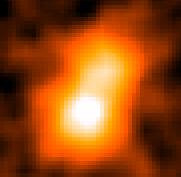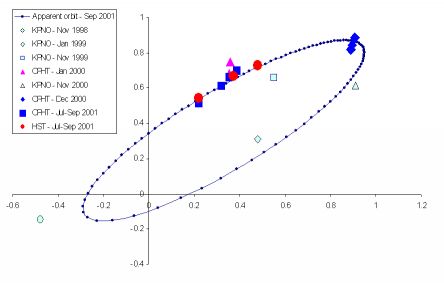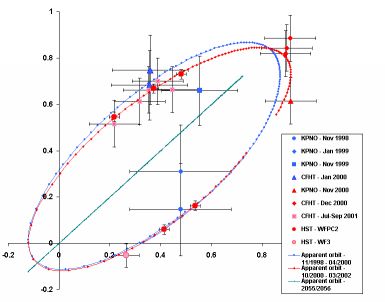For each of our observations 1998 WW31 was centered on the planetary camera CCD, giving a resolution of 0.046 arc seconds per pixel. With a separation on the sky of ~0.7 arc-seconds the two components were easily resolved. Observations were obtained at three separate epochs: 12 July, 9 August, and 10 September 2001. At each epoch 2 exposures were made through each of the F555W, F675W and F814W filters (comparable to the Johnson system V, R, and I filters).
The animation on the right shows the two components on these three epochs
nearly a months apart, with the faint component moving with respect to
the bright one kept fixed on the animation. Form month to month, the components
are getting closer and closer. On the last one, the separation between
them is 0.59 arc-seconds.
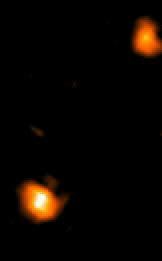
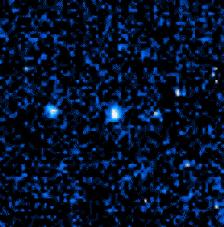 The binary Kuiper Belt Object 1998 WW31 - Chapter 3
The binary Kuiper Belt Object 1998 WW31 - Chapter 3
